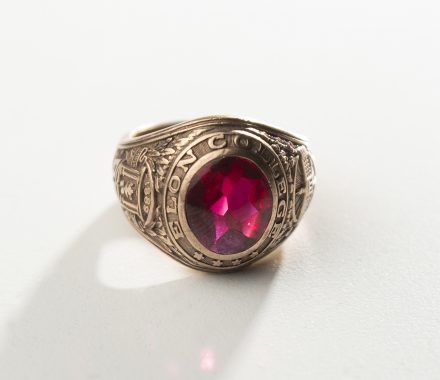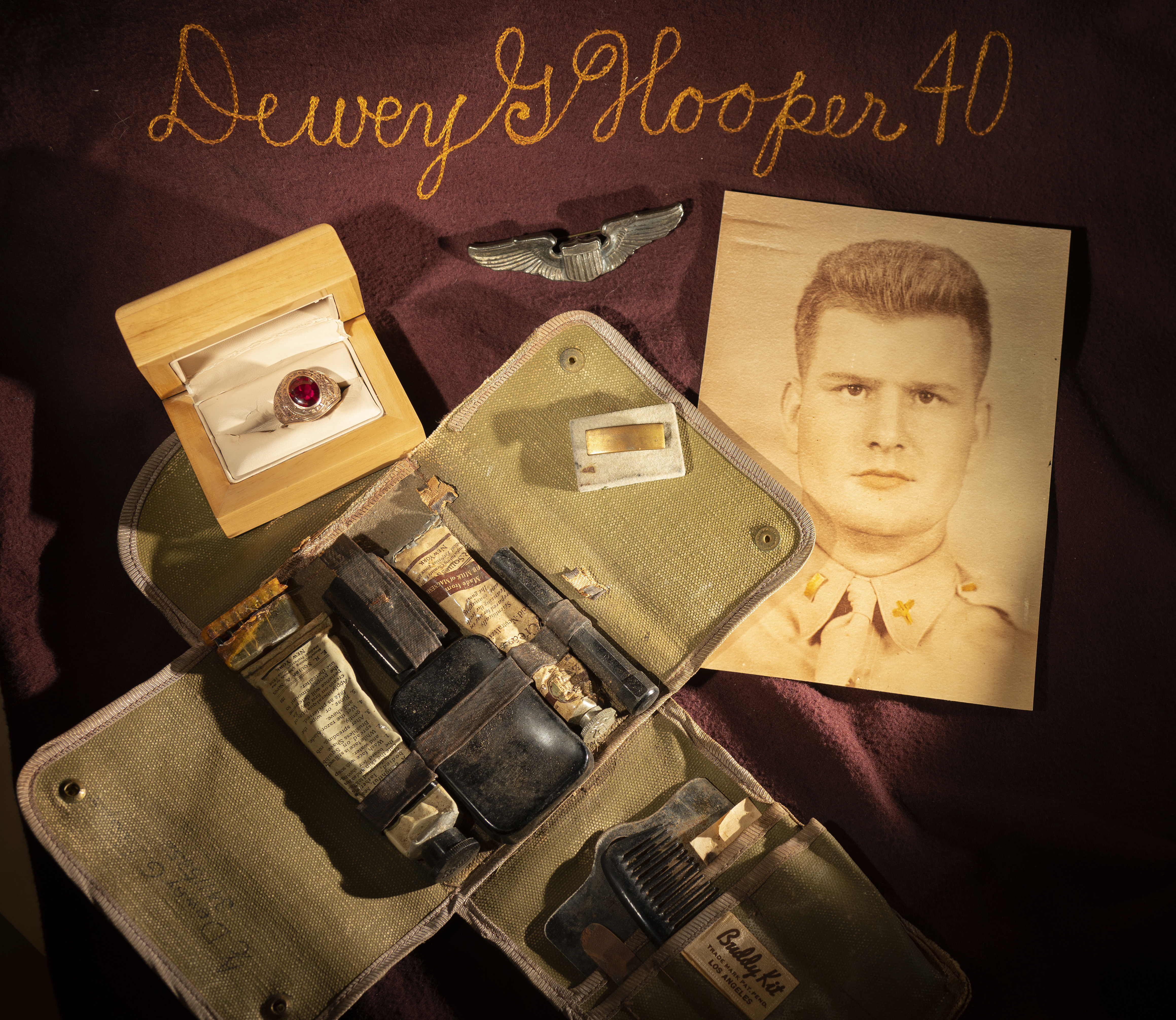Curated by Archivist and Assistant Librarian Randall Bowman, the exhibit documents the life of Hooper, his death in a plane crash while at war and the artifacts from his life and the crash given to Elon.
This Memorial Day, the Carol Grotnes Belk Library at Elon University has launched a new online exhibit documenting the life and untimely death of alumnus Dewey Hooper ‘40, a World War II pilot who crashed off the coast of Australia in 1942.
The exhibit titled “He Knew the Dangers Before Him: Elon graduate Dewey Hooper in World War II” was curated by Archivist and Assistant Librarian Randall Bowman and includes artifacts from Hooper’s life that were given to the university by Hooper’s family, including his Elon class ring that was thought lost but recovered in 1990. Among the items on display in the digital exhibit along with his class ring are his second lieutenant bars and flight wings, portions of his aircraft — “The Texas Terror” — and items from when he was a student at Elon.

Bowman began researching Hooper for the exhibit after learning about his story when exploring how news of the Pearl Harbor attacks impacted Elon. “In 1942, we didn’t know if we were going to win the war,” Bowman said. “Things were dire, and young men like Dewey Hooper got thrown into it.”
One of 10 children, Hooper grew up in Alamance County close to Mebane and studied to become a teacher at Elon. After teaching in high school for a year, Hooper joined the U.S. Army, eventually landing in the Air Corps and completing his pilot training at Turner Field in Albany, Georgia during the summer of 1942.
It was on Dec. 18 while flying the B-24 Liberator named “The Texas Terror” during a tropical storm that Hooper and his crew flew off course and crashed into the side of Mount Straloch on Hinchinbrook Island near Australia’s Great Barrier Reef. Due to the location of the crash, the wreckage wasn’t found until 1943 and Hooper’s remains wouldn’t be recovered and returned to the United States for burial until 1949.
Miraculously, an Australian man named Ron Deering who was living in Texas at the time made the trek to explore the wreckage in 1990, and while there discovered Hooper’s Elon College ring. Through Elon, he was able to connect with Hooper’s family. Deering returned the ring and other items to them the following year, with those items and others later given to the university.
“Deering could have kept the ring and done nothing with it, but he went out of his way to connect with Elon and find Dewey’s family,” Bowman said. “The whole thing is a great story. When I found this collection and started to read through it, I knew I wanted to put it into an online format where a lot of people could access it and see the whole story in a narrative form.”



